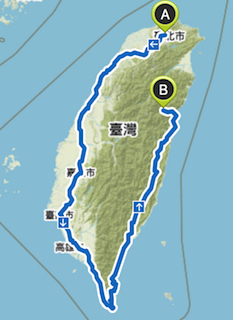
Taipei – Dajia – Lukang – Tainan – Kenting NP – East Rift Valley – Taroko Gorge – Taipei
(900 km cycled)
Taiwan was always on the back of Kurt’s mind as a possible cycling destination. A few rave reviews from touring cyclists renewed his interest, while a very helpful and friendly stall at the local travel fair clinched the deal for this exotic getaway.
Off the east coast of China, Taiwan is nestled between Japan and the Philippines in the Pacific Ocean. The island nation is about half the size of the Republic of Ireland, with 5 times the population (23 million). Our planned trip received mixed reactions including: Sure what’s in Taiwan only toy factories?


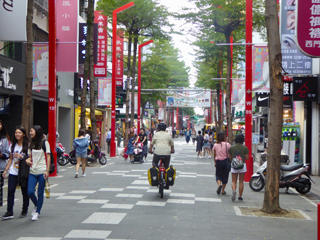
Thai Airways brought us there and back, but not without breaking Darina’s front fork. This is always the risk you take when travelling with a bike bag. Well, no better place than Taipei to look for a replacement. Colorful Cycle bicycle shop had a new fork ready and mounted for Darina in a few hours.


These hours we gainfully employed to have a look at Chiang Kai-shek’s Memorial around the corner. Chiang Kai-shek was born in China in 1887, a time when China was suffering from the results of the Opium Wars. After military training in Japan, he returned and fought on Sun Yat-sen’s side to establish a Chinese Republic.
Following Sun’s death in 1925, he took control of the Kuomintang army and fought the communist forces and warlords with a view to becoming the new leader of China. His fortune took a turn for the worse after World War II, and by 1949 he was forced to retreat to Taiwan. There, he established a government and hoped to use it as a starting point to reclaim the mainland. He died in 1975, still hoping.
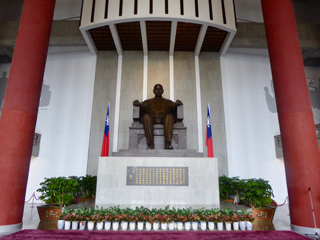
Since then, Taiwan has become a sovereign, democratic state and an economic powerhouse. Officially known as the Republic of China (ROC), Taiwan’s independence is only recognised internationally by 17 states, including the Vatican. Beijing still considers it part of the People’s Republic of China and has threatened to use force to reunite Taiwan with China, should the case arise. While we were there, 130,000 pro-independence demonstrators marched through Taipei calling for an independence referendum.
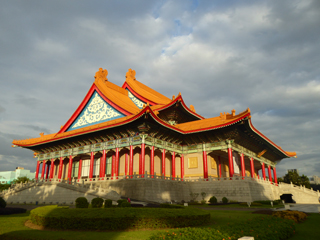

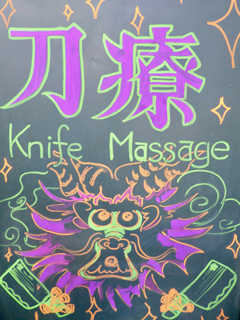
Darina’s curiosity got the better of her and she just couldn’t resist signing up for a knife massage. Well, after a series of grounding stretches, a pair of cleavers rapped up and down her whole body for a full hour, with the odd metal on metal cling reminding her of the weapons being used! This 2,000 year old Chinese practice was employed by monks for ailing patients when all else failed, and according to Darina, as far as massages go, it’s the cutting edge!
Religion in Taiwan comes mostly in the form of Buddhism and Taoism, with a strong influence from the Confucian element harmony. However, temples did not appear clear-cut Buddhist or Taoist to us, in that Tao gods seem to rub shoulders with Buddhas in many temples. What they do have in common though is amazing attention to detail and decoration, with magnificent wood carvings, paintings and stonework.
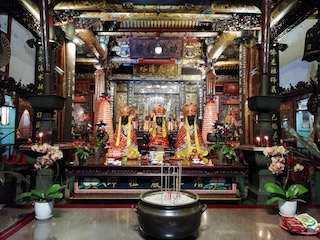
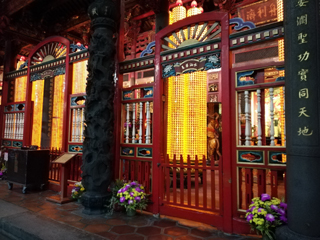
By sundown, it was time to hit our first night market. What a wonderful way to browse and sample local dishes. No part of the animal anatomy goes to waste there and the selection includes chicken ass, hearts and necks, duck heads and tongues, as well as pig intestine strings!



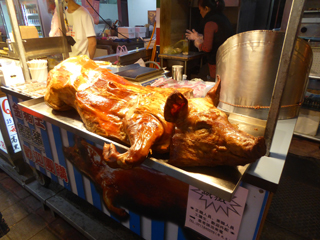
A number of streets are closed for the night market from about 5pm to midnight, or in some cases until 2am. Alongside the food stalls, you can buy everything from clothes and leather goods to digital accessories and alternative remedies. There is entertainment for all ages and it wasn’t unusual to see children on pinball machines at 10 or 11pm!


The original idea was to cycle clockwise around the island and then up the central mountainous area, avoiding the busy built-up north west. However, the weather forecast promised a week of rain on the east coast and in the mountains, so at the very last minute we decided to follow the sun and head west.
It did mean that we spent the first 4 or 5 days cycling in and out of the cities where most of Taiwan’s population live.
On the positive side, the cycling route number 1, which loops the island, is very well signposted and we followed it most of the way.
Click on the map for a more detailed view of the roads we took.
Leaving Taipei sounded easy: follow a cycle lane in the park along the river. The only problem was to find access to it. Big flood walls topped with elevated roads protect the city from dam bursts. Once we found an open flood gate, we were off!
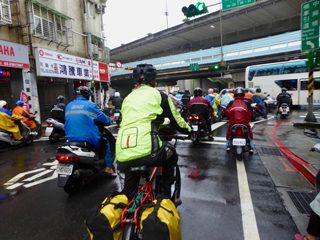
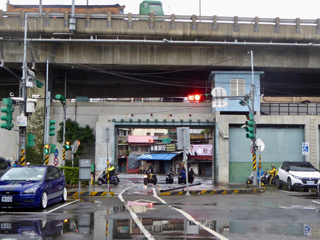
The route number 1 brought us along the river with ingenious art on the concrete dam, and above it an equally impressive array of elevated motorways with their access ramps, exits, interchanges and a train line woven into the whole arrangement. After a few hours we were on a small road through forest and along a lake before we could roll down a valley to our first stop in Hsinchu.
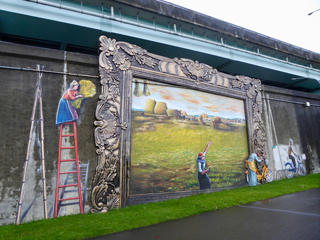
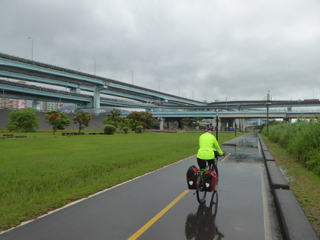



Most of the cycling on the west coast is on 6-8 lane dual carriageways, with a generous designated cycling and motor scooter lane. Still, it’s a lot of into town, out of town, industrial zone and 2 rice fields, followed by more into town, out of town etc. The advantage of cycling anti-clockwise is that you are on the right side of the road for coastal views.


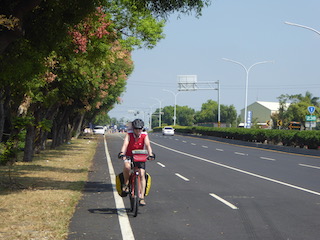
Dajia city offered a welcome change to this sometimes mundane cycling stretch. The local Jenn Lann temple is dedicated to the Goddess Ma Zu, who has been venerated in Taiwan since the Chinese settled there in the 1600s. Ma Zu was born in SW China, didn’t cry for her first month after birth and because she often appeared to sailors in difficulty at sea, has become known as the guardian of seafarers. Many of the temples on the west coast of Taiwan are Ma Zu temples and we happened upon a wonderful carnival in which the Ma Zu statue from Taichung was on a 300km tour from temple to temple.
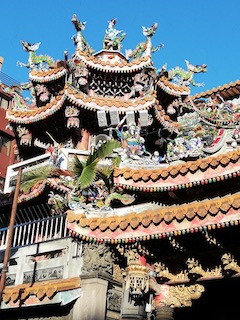
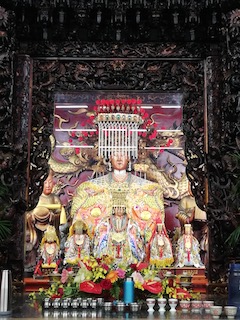
The festivities started out with a flamenco-belly dance affair and were topped off with a painted-face sword and trident dance warding off bad spirits. In between, fire crackers, fireworks, confetti, chanting, drumming and incense burning completed the picture, as the statue was precariously jolted around in a sedan chair borne by pilgrims in corporate identity t-shirts.


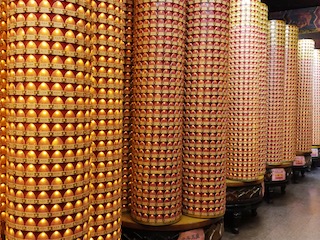
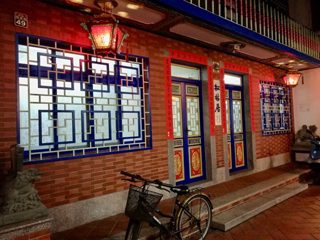
Lukang has a pleasant old town that was built on a long since silted-up harbour. There too is a Ma Zu temple worth a pilgrimage. The biggest building in town is a hotel for visiting believers… and cyclists like us! After 5pm the weekend visitors had moved on and we were able to stroll peacefully through the old town and admire the buildings without the crowds and market stalls.
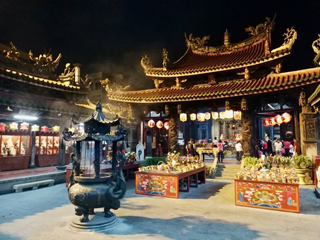
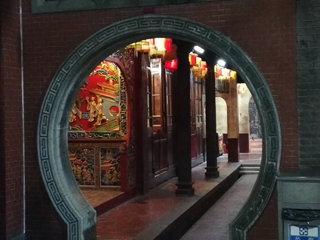

The Xiluo Bridge (1939m long) spanning the Zhuoshui River in Yunlin was completed in 1952 and at the time was the second longest bridge in the world after the Golden Gate, San Francisco. It’s still the area’s pride and joy!

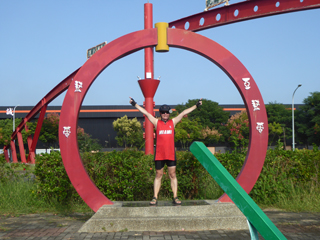
With the Tropic of Cancer running through the middle of Taiwan, the northern half boasts a subtropical climate, while the south has more a tropical one. For us it meant that as we cycled further south the temperatures increased slightly and there was more wind. It never got much hotter than 32°C.
Darina discovered on this stretch that her new GORE cycling shorts were not worth their 100€ price tag, as she got got rightly sunburned through them. Gore’s response is that their products are only certified to protect from wind and rain. So, buy an extra bottle of SPF 30 sunscreen if you intend wearing GORE cycling shorts!

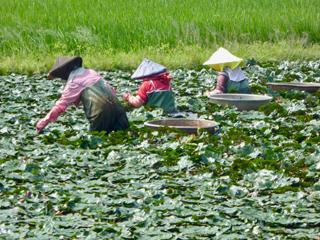
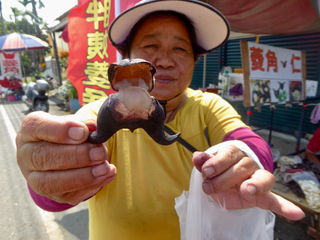
Taiwan was settled by farmers probably from mainland China around 4,000 BC. A lack of tradeable goods meant that they were left alone until the 16th century. Named Formosa (beautiful) by a passing Portuguese captain and partially invaded by the Spanish and the Dutch, it fell again to China under the Qing Dynasty in 1663.
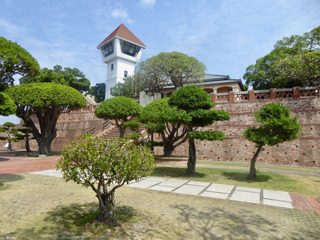
Tainan was the old capital of Taiwan. During their occupation, the Dutch built Fort Zeelandia there in the early 17th century. Two walls are still standing and next to it the fort that the Chinese put there after kicking out the Dutch. Incidentally, sugar, sand, sticky rice and seashells were used as mortar for these surviving walls! The newest addition is a Japanese Office on top of the Chinese fort.
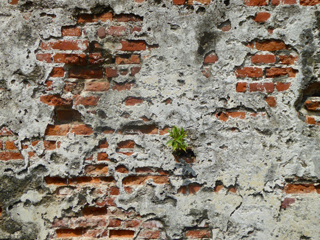
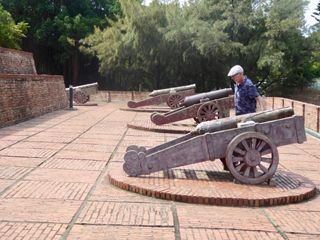
When we stumbled on these vending machines in the old town, we were totally bamboozled as to what they were selling. They looked a wee bit too clean for petrol pumps, but not even the varying prices gave us any clue. It transpired that no one drinks the tap water in Tainan and so, like petrol, water of several qualities is dispensed.
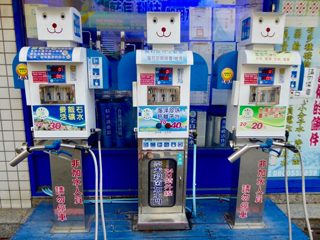

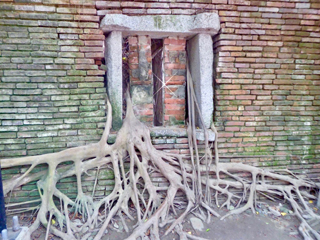

Having done our fair share of cycling in and out of cities, we decided to take a local train from Tainan to the far end of Kaohsiung. From there it was fields all the way to the coast and the Kenting National Park. Pleasant stretches along beaches and tropical fruit plantations became the norm.
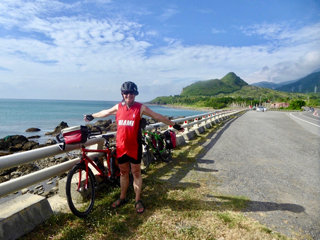
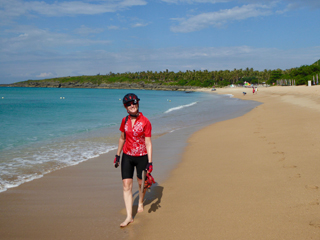

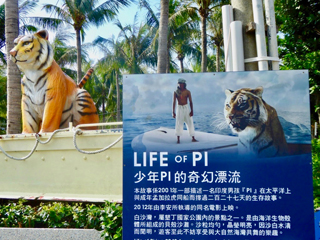
It’s true that all Taiwanese love to go to Kenting NP, so we were lucky to enjoy the ride before the weekend crowd.
One of the attractions on the coast is the Sail Rock, reputed to have the same shape as President Nixon’s head!
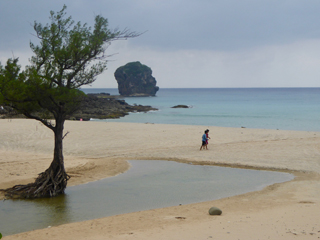
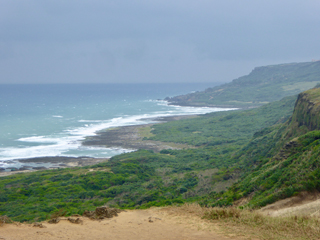
After turning north we had a seriously strong gusty wind to fight but as soon as the road left the ridge and turned inland, bliss reigned supreme. Shy monkeys swung from branch to branch and gathered in clusters on the roadside, scattering as we approached.

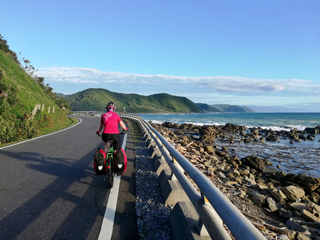
This delightful road is no secret though, as we climbed one hill with two cycling groups from Hong Kong. Only after reaching road number 9 were we outnumbered by cars again.
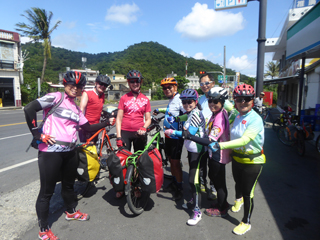
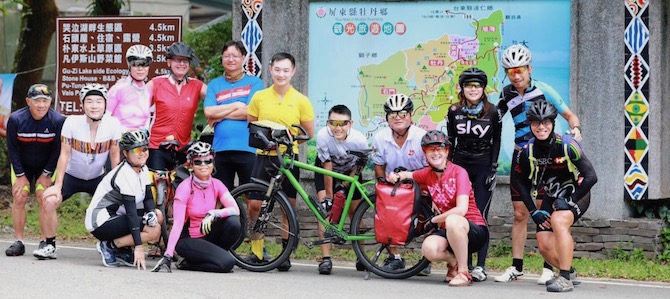

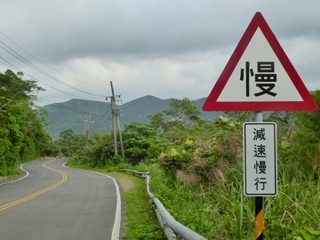

Taiwan is spending a fortune to renew the coastal road. Earthquake/typhoon prone and exposed to whatever weather comes in from the Pacific Ocean, it takes a lot of concrete pillars just to keep the road where it is.
The East Rift Valley is where the Eurasian and the Philippine tectonic plates meet. This fertile stretch of land, full of rice fields and orchards, as well as tea and coffee plantations is situated between the coastal and central mountain ranges. It offers an array of peaceful roads to cycle and enjoy the scenery.
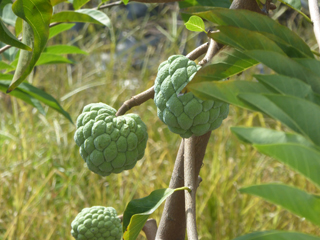
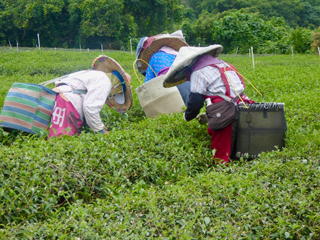
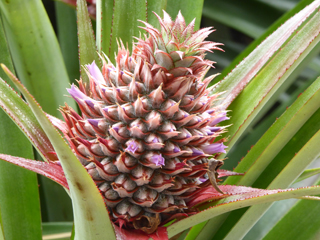
Taiwanese indigenous people account for about 2% of the population and have inhabited Taiwan for over 5,000 years, living on the island long before the first wave of Chinese immigration in the 17th century. Austronesian by origin, they are ethnically related to the Filipinos, Malaysians and Indonesians. Darina was hauled into a wedding ceremony by a bunch of extremely extroverted and cheerful ladies all dressed up in their traditional finery for a dance performance.
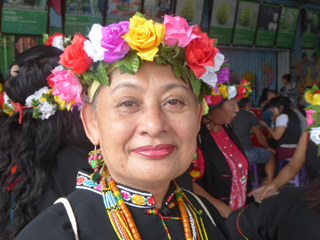


This is probably the most-photographed tree in Taiwan, made famous by Takeshi Kaneshiro (a Taiwanese/Japanese actor and singer) in an advert for EVA Air. In the ad, he cycles through this idyllic ricefield panorama and then sits down under the only tree for miles around … for a cup of freshly-brewed tea! The road is called Mr Brown’s Boulevard after a local brand of tea.
The advert is very well done and starts with an apt rhetorical question: We travel the world, but do we see the world? We’re not sure if it’s the clever ad or the presence of drop-dead gorgeous Takeshi Kaneshiro that has made this area of Chishang one of the most-visited spots in the region!
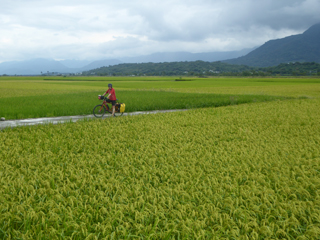


Hualien city has a wonderful network of cycling lanes including one right down to the beach, where a fabulous marble pavement awaits. The turquoise water was so inviting, we couldn’t understand why there was no one in swimming. Craving a quick dip, Darina decided to double check with the locals. A definite chorus of NO followed, as they put their hands on their heads symbolising… sharks! Well, you never saw anyone change their mind as fast!
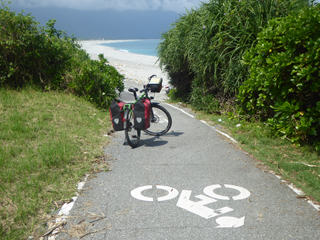
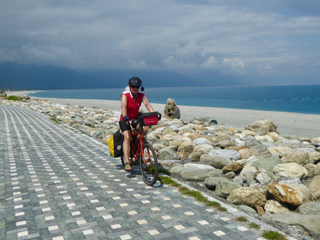

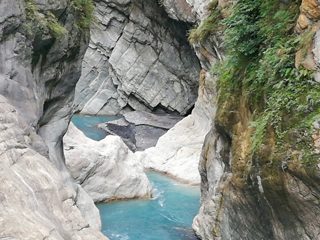
One of our highlights was the Taroko Gorge. Marble carved by rivers appears in spectacular forms at the bottom of walls a few hundred meters high. With hikes in and out of side gorges, and an impressive road snaking its way through, it really is a hiker/biker playground of the highest order.
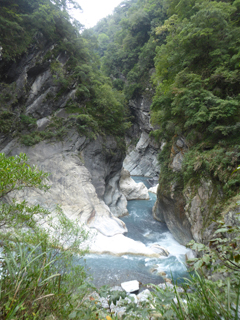
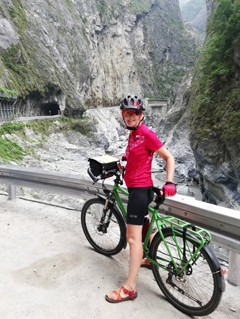

After cycling right down the west coast and up the east without any Mandarin to be proud of, our failed attempts were justified when this sign appeared in the gorge. We came to the conclusion that if it takes 22 intricate characters to say the word Rockfall, then perhaps we should stick with English!
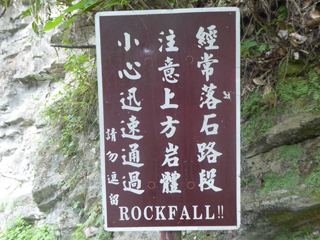
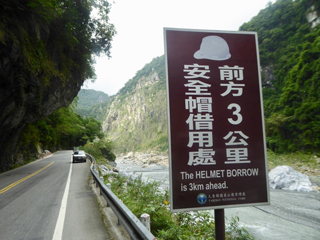
The hikes through the gorge came with all sorts of warnings:
-Wear a safety helmet
-Prepare a flashlight
-Beware of rockfalls, wasps and venomous snakes
There was even a helmet-lending system in place, while construction workers were busy securing the roadside cliffs and overhangs.
After cheekily overtaking a police car stuck in a roadworks queue, we feared the worst when shortly afterwards a policewoman flagged us down. No, there was no ticket! She just wanted us to pose for about 50 pictures beside a sign announcing a road closure because of a bike race the following day! Throughout Taiwan we noticed life-size cut outs of policemen pointing to road signs… so we guess that was our fate too!
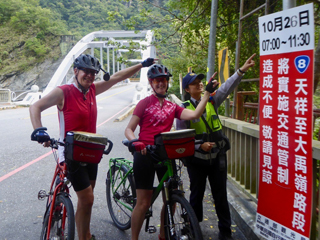
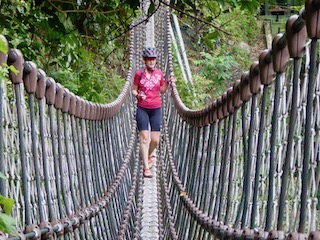
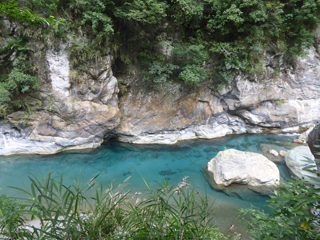
The race advertised was the Taiwan King of Mountain (KOM) Challenge, described as one of the greatest epic climb events in the world. The 105 km race starts at sea level and reaches 3,275km at the Wuling Pass, after climbing through the gorge. While his wife was gearing up for the KOM challenge, Niel Copeland, based in the UAE, had other plans: The Bikingman Taiwan ultra bike race. A 1,150km loop of the island with 18,000m elevation and a time limit of 120 hours!
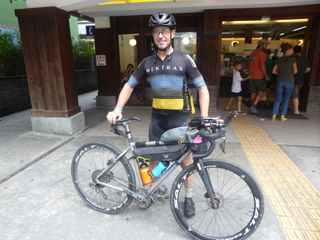
Our 900km flat coastal route paled into insignificance as he recounted his ordeal cycling through the night up and down the central mountain range, with the odd 4-hour kip and venomous-snake encounter!
Incidentally, one of the race organisers’ aims was to break the Western-world idea that Taiwan is just one big toy factory!
The coastal road north of Taroko is reputedly too narrow and too busy to be funny, so we took a train back to Taipei via the colourful fishing harbour of Nangfang’ao south of Su’ao. The fish market kept us occupied for a couple of hours and Darina even had a polka-dot fish for lunch!
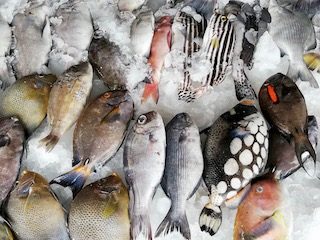


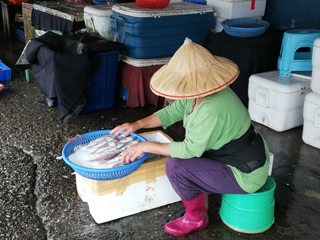
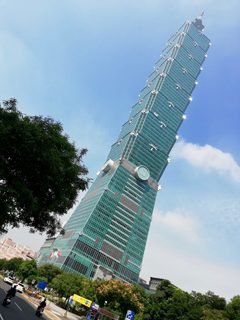
This left us time to go up the Taipei 101 tower before Darina had an afternoon shopping fix and Kurt had a trip to the National Palace Museum. The museum displays some of China’s best historical artefacts, taken from the mainland by the retreating Kuomintang army in 1949.
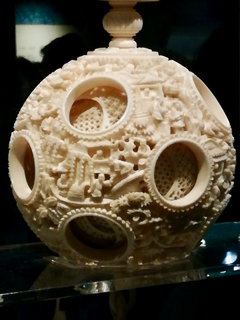
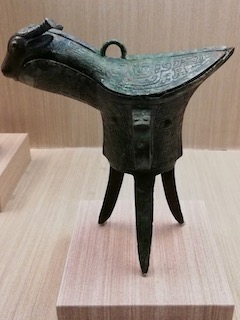
Our Taiwan trip got off to a slow start because of our last minute change of plan and the city cycling that ensued. However, in the end, we had a very enjoyable tour and stayed dry in the process. For a second time, we would include more small towns and secondary roads in the west and, of course, better weather for the mountains!


Cycling has taken off big time among the locals. And the infrastructure is in place to match the craze. Cycle lanes, marked routes along main roads, pumps everywhere, signposted rest stops and well-equipped bike mechanic shops are there for all your needs and wants. 7-11s and similar convenience stores are never far apart for food/drink stops between towns.
Speaking of food, that’s something that won’t disappoint in Taiwan. Both quality and variety are as mind-boggling as they are nurturing, and most towns had their own speciality that the locals were proud to promote. 50-150 New Taiwanese Dollars (1.50-4.00 €) was usually enough for a main course.
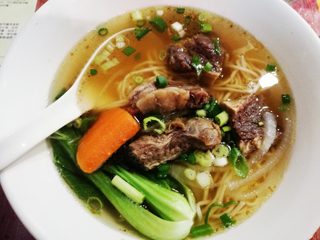

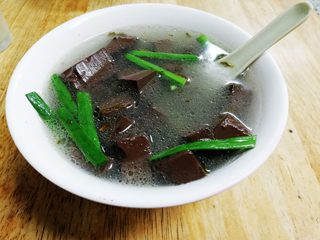


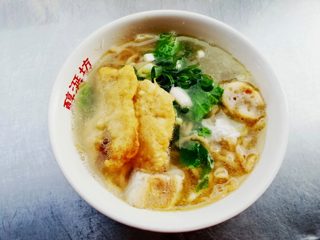


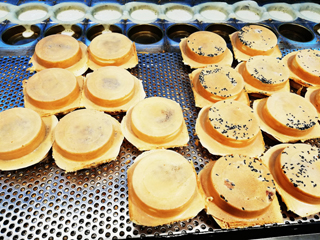

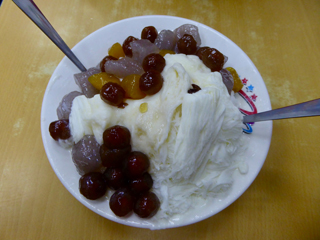
Desserts could be fresh tropical fruit, sweet-potato pies, caramelised fruit on skewers or snow ice: fresh fruit, jelly, beans and tapioca pearls topped off with shaved ice and condensed milk!
The selection of teas is so huge, we didn’t have the time to go through all the available flavours. Bubble tea is a local speciality with tapioca/sweet potato starch pearls to ensure there’s eating and drinking in the hot or iced milk teas.
While bubble teas and tropical fruit juices are delicious, they do take their toll as far as plastic waste is concerned.
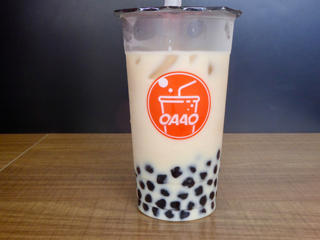
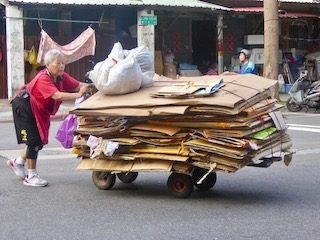
Taiwan has decided to ban plastic straws for take-out drinks from 2019 and all single-use plastic will have been eliminated by 2030. Garbage collection is quite unique in that a yellow garbage truck playing classical music circulates through town and the locals themselves toss their official blue garbage-filled sacks into the back as it rolls past.
The Taiwanese have an interesting left-hand-turn policy for motorbikes and bicycles. Instead of easing one’s way across 4 lanes of traffic into the left-hand lane, cyclists are required to go straight through the junction and wait in a rectangular box ahead of the traffic waiting at the red light on the right-hand side. Then, when the lights change they have a safe head-start. We love it!
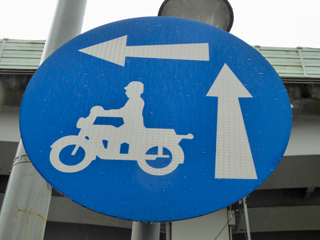
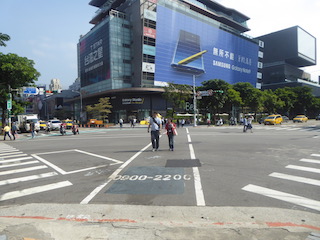
Pedestrians, on the other hand, have the option at certain times of day to cross a junction diagonally rather than having to deal with 2 pedestrian crossings and 2 sets of traffic lights. The permitted time period is painted on the street and the traffic lights are synced accordingly to allow for the longer crossing.
There is no shortage of accommodation in Taiwan and therefore no need to carry a tent. Simple hostel-style bunk beds in the countryside cost us 300 New Taiwanese Dollars (NTW) each (8€), whereas we generally paid about 1,200 NTD (35€) for guesthouses/hotels. In Taipei, that could double. In all cases the service was exceptionally friendly and attentive.
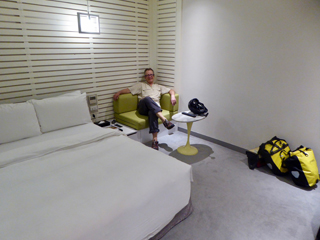

A big thumbs up goes to the Taiwanese themselves, who were ever friendly and helpful. Armed with a voice translation app we were able to converse for hours and learn a lot about their fascinating country and traditions. No one tries to make an extra dollar from an unsuspecting tourist. They all have a smile for you and make it so easy to smile back.
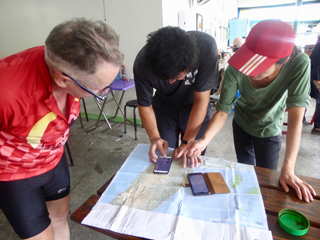
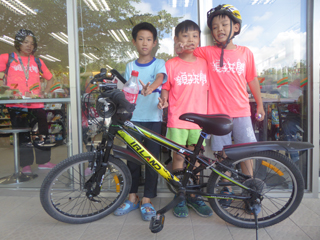
We felt safer on the roads in Taiwan than at home, even on 8-lane dual carriageways and cycling through the sprawling cities in the north west. Taiwan is a big draw for cyclists from Hong Kong, Malaysia and Japan and is certainly an exemplary cycling nation that many European planners could learn a few tricks from.
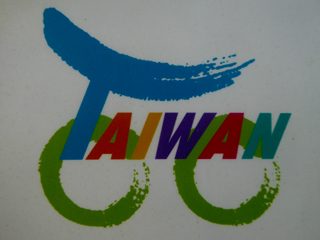

Well, we cycled 900km, passed fish, pig and duck farms; biotechnology firms; tea, fruit and rice plantations; gorgeous beaches, melodic jungle and temples galore but never came across one single toy factory! Perhaps it’s time to reset the western perception of this fascinating island!

